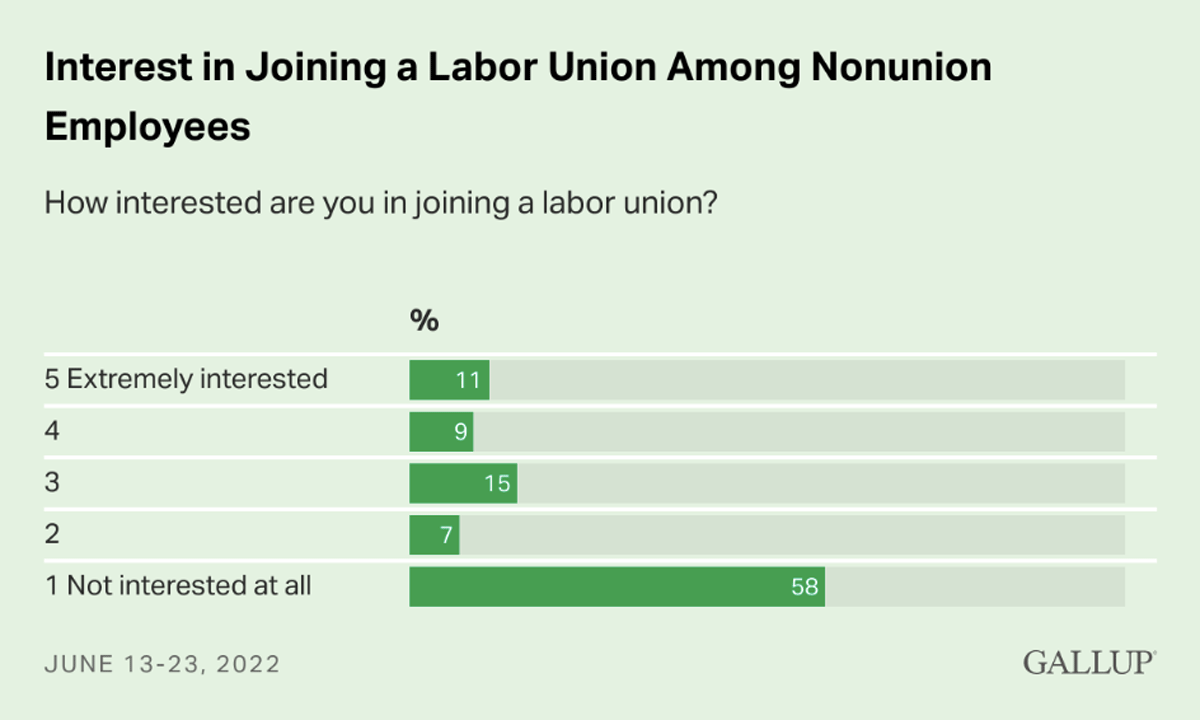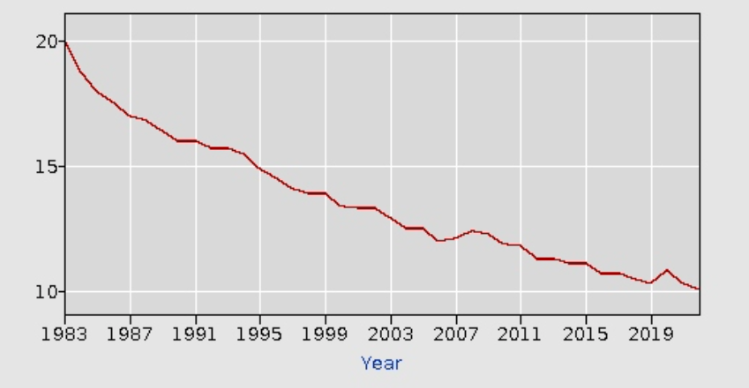Most Americans Love Unions — But Not Enough to Actually Join One
Antonucci: Sept. is a season of optimism for unions. But membership has declined through the Reagan, Bush, Clinton, Bush, Obama, Trump & Biden years.

Get stories like this delivered straight to your inbox. Sign up for The 74 Newsletter
September is the season of hope and optimism for America’s unions. The Labor Day holiday provides a platform for them to tout their accomplishments. Politicians line up to extol their virtues. Media outlets run stories on the benefits of unions and publish opinion pieces from union officers.
And then there are the polls.
Since 1936, Gallup has asked Americans if they approve of labor unions. Every year but one (2009), a majority approved. This year, 67% of respondents expressed their support of unions, down slightly from 2022.
Further results from the poll are entirely positive for the labor movement. Large majorities support unions over management in disputes. Most respondents say unions are good for everybody and think they will become stronger in the future.
The AFL-CIO released its own poll, showing similar results, with support strongest among those under the age of 30.
The AFL-CIO had to oversample union members to get these outcomes, but it makes sense that since most Americans are employees, they would more closely identify with the status of workers than with employers.
Let’s not begrudge unions their day in the sun, because it inevitably leads to their winter of discontent.
That’s because every January, the Bureau of Labor Statistics releases its annual report on union membership. And unfortunately for unions, the graph of the percentage of American wage earners who belong to a union looks like this:

It’s a pretty steady decline throughout the Reagan, Bush, Clinton, Bush, Obama, Trump and Biden years, which suggests that changing politicians doesn’t change union fortunes.
How to reconcile the support for unions with the falling membership levels?
Last year, Gallup took this question head-on, asking non-union workers to express their level of interest in joining a union. This is how they responded:

This seems to be human nature at work. Saying you support something is a lot easier than doing something about it. But as discouraging as this result is, it actually understates the problem for unions.
Joining a union is not a difficult process for most workers. Sign a card and pay dues. The hard part is forming a union in your workplace for the specific purpose of collective bargaining with your employer. Doing so is akin to starting a nonprofit charity or small business. It’s a big job, and most people aren’t interested in pursuing it unless they are very, very unhappy at work.
Claiming, as the AFL-CIO does in its survey, that we would all be better off if we just fell in with union wishes is also a hard sell, considering the disputes major national unions are having with their own employees.
The Association of Field Service Employees is a union of professional staffers who work for the National Education Association. They have been without a contract since June 1 and claim NEA managers are using unfair labor practices.
Staffers of the Service Employees International Union headquarters have authorized a strike against the union, as they have been without a contract for more than a year.
Even workers at AFL-CIO headquarters are working under an expired contract. The staff guild claims AFL-CIO managers want to reduce employee retirement benefits.
It’s hardly a ringing endorsement for unions when the people who work for them can’t get a contract.
So enjoy the latest spate of union resurgence stories, and calmly await the spate of excuses when reality doesn’t conform with dreams. It’s the circle of union life.
Mike Antonucci’s Union Report appears most Wednesdays; see the full archive.
Get stories like these delivered straight to your inbox. Sign up for The 74 Newsletter

;)